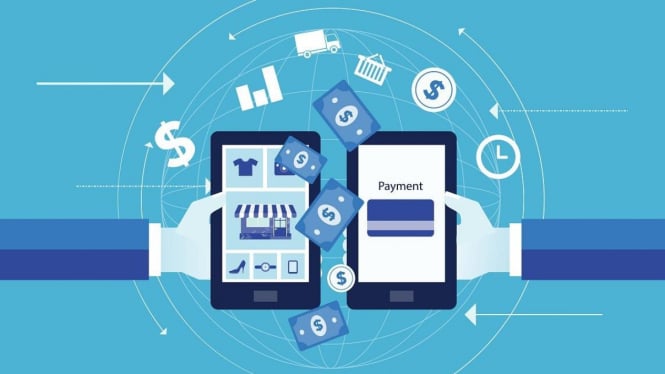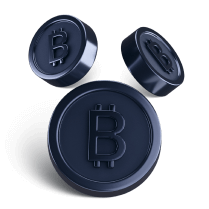SRP Coin: Bridging Traditional and Digital Economies. The fusion of traditional financial systems with the dynamic digital economy is a crucial step toward a more integrated and efficient global marketplace. SRP Coin stands at the forefront of this transformation, offering a robust cryptocurrency that facilitates seamless transactions and enhances the synergy between conventional economic structures and the burgeoning digital economy. This blog delves into the multifaceted role of SRP Coin, exploring its potential to revolutionize various sectors by merging traditional and digital economies.
Understanding SRP Coin
SRP Coin is a next-generation cryptocurrency engineered to streamline transactions and provide a secure, transparent medium of exchange. Unlike many cryptocurrencies, SRP Coin is designed for smooth integration with existing financial systems, ensuring a seamless transition for users accustomed to traditional banking and commerce.
Definition of SRP Coin
SRP Coin is a digital currency leveraging blockchain technology to ensure secure, efficient, and transparent transactions. Its architecture includes advanced cryptographic techniques, decentralized storage, and smart contract capabilities, making it a versatile tool for various economic activities.
Importance of SRP Coin in Decentralized Networks
In decentralized networks, SRP Coin plays a pivotal role by eliminating intermediaries, reducing transaction costs, and increasing transparency. This fosters trust and reliability, crucial for both traditional businesses and digital enterprises looking to adopt blockchain technology.
Brief Overview of What Will Be Covered in the Blog
This blog will explore the traditional and digital economies, SRP Coin’s role in bridging them, its technological infrastructure, economic impact, regulatory considerations, and future prospects. By understanding these aspects, readers will gain insight into how SRP Coin can revolutionize global trade and commerce.
The Traditional Economy
Traditional economies are characterized by established industries like manufacturing, retail, and services, relying heavily on physical infrastructure and centralized financial institutions. These sectors have been the backbone of economic stability and growth for decades.
Historical Perspective on Traditional Economies
Traditional economies have evolved over centuries, with industrialization and globalization playing significant roles. However, they face challenges such as inefficiencies, high operational costs, and limited access to global markets.
Key Sectors in Traditional Economies
Key sectors include agriculture, manufacturing, retail, and services. These industries form the foundation of economic activity, employing millions and contributing significantly to GDP. However, they are often slow to adopt new technologies, leading to inefficiencies and missed opportunities.
Challenges Faced by Traditional Economies
Traditional economies face several challenges, including:
- Inefficiencies: Due to outdated technologies and processes.
- High Operational Costs: Resulting from reliance on intermediaries and centralized institutions.
- Limited Access to Global Markets: Especially for small and medium-sized enterprises (SMEs).
- Regulatory Hurdles: Stringent regulations that can stifle innovation.
- Slow Adoption of New Technologies: Leading to a competitive disadvantage.
The Digital Economy
The digital economy is driven by technological advancements and the internet, encompassing e-commerce, digital services, and online financial transactions. It offers numerous benefits, such as increased efficiency, reduced costs, and enhanced accessibility to global markets.
Characteristics of the Digital Economy
The digital economy is characterized by rapid technological innovation, global connectivity, and the ability to scale quickly. It includes industries such as e-commerce, digital marketing, online financial services, and tech startups.
Benefits of the Digital Economy
- Increased Efficiency: Automation and digital tools streamline processes.
- Reduced Costs: Lower operational costs compared to traditional methods.
- Enhanced Accessibility: Easy access to global markets and resources.
- Innovation and Scalability: Rapid growth and adaptation to new trends.
- Better Customer Insights: Through data analytics and targeted marketing.
Challenges of the Digital Economy
Despite its advantages, the digital economy also presents challenges, including:
- Cybersecurity Threats: Increased risk of cyberattacks and data breaches.
- Regulatory Uncertainties: Varied regulations across different regions.
- Digital Divide: Inequitable access to technology and the internet.
- Privacy Concerns: Managing and protecting user data.
- Market Saturation: High competition in certain sectors.
Bridging the Gap: SRP Coin’s Role
SRP Coin plays a crucial role in integrating traditional and digital economies by leveraging blockchain technology to enable secure, transparent transactions that can be easily adopted by traditional industries.
SRP Coin in Manufacturing
In the manufacturing sector, SRP Coin can facilitate faster payments and streamline supply chain management. By using blockchain for transparent and immutable record-keeping, manufacturers can reduce fraud, improve efficiency, and enhance collaboration with suppliers and distributors.
SRP Coin in Retail
In retail, SRP Coin offers a secure, low-cost alternative for transactions, reducing the reliance on traditional banking systems. Retailers can benefit from lower transaction fees, faster settlement times, and enhanced security, making it easier to manage cross-border transactions and reach a global customer base.
Success Stories
Several businesses have reported significant improvements in efficiency and cost savings after adopting SRP Coin. For example, a multinational manufacturer streamlined its supply chain payments, reducing delays and fraud. A global retailer reduced transaction fees and improved customer satisfaction by offering SRP Coin as a payment option.
Technological Infrastructure
The technological backbone of SRP Coin is its advanced blockchain architecture, which ensures security and transparency. This technology allows for decentralized record-keeping, reducing the risk of fraud and enhancing trust among users.
Blockchain Architecture
SRP Coin’s blockchain uses a decentralized ledger to record transactions, ensuring they are secure, transparent, and immutable. This ledger is maintained by a network of nodes, which validate and record transactions, making it difficult for any single entity to alter the data.
Cryptographic Techniques
Advanced cryptographic techniques are used to secure transactions and ensure data privacy. This includes public and private key encryption, digital signatures, and cryptographic hashing, which protect against unauthorized access and tampering.
Smart Contracts and dApps
Smart contracts are self-executing contracts with the terms of the agreement directly written into code. They automatically execute transactions when predefined conditions are met, reducing the need for intermediaries. Decentralized applications (DePIN) built on the SRP Coin blockchain offer various services, from financial transactions to supply chain management.
Economic Impact
The integration of SRP Coin into traditional economies brings numerous benefits, enhancing efficiency, reducing costs, and fostering innovation.
Benefits for Businesses
- Higher Efficiency: Streamlined payment processes and reduced reliance on intermediaries.
- Lower Operational Costs: Reduced transaction fees and faster settlement times.
- Access to Global Markets: Easier cross-border transactions and increased market reach.
- Enhanced Security: Blockchain technology ensures secure and transparent transactions.
- Innovation and Growth: New business models and opportunities emerge with blockchain integration.
Benefits for Consumers
- Lower Transaction Fees: Reduced costs compared to traditional banking systems.
- Faster Processing Times: Quicker settlement of transactions.
- Enhanced Security: Increased protection against fraud and data breaches.
- Increased Trust: Transparent and immutable record-keeping.
- Access to Global Markets: Ability to transact with businesses worldwide.
Regulatory Considerations
Navigating the regulatory landscape is crucial for the success of SRP Coin. Cryptocurrency regulations vary widely across different jurisdictions, posing challenges for widespread adoption.
Current Regulatory Landscape
Cryptocurrency regulations are still evolving, with different countries adopting varying approaches. Some regions have embraced cryptocurrencies, implementing clear regulations and encouraging innovation. Others remain cautious, imposing strict rules and restrictions.
Compliance with Regulations
SRP Coin is designed to comply with existing regulations, ensuring legal and financial stability. This includes adhering to anti-money laundering (AML) and know your customer (KYC) requirements, ensuring transparency and preventing illicit activities.
Future Outlook
The future outlook for cryptocurrency regulation is promising, with many countries working towards establishing clear guidelines to facilitate the integration of digital currencies into the mainstream financial system.
Upcoming Features
- Enhanced Privacy Protocols: Improved privacy features to protect user data.
- Integration with Emerging Technologies: Collaboration with IoT, AI, and other technologies.
- Development of Decentralized Applications: Expansion of DePIN to offer more services.
- Global Partnerships: Collaborations with businesses and financial institutions worldwide.
- Scalability Improvements: Enhancements to handle increased transaction volumes.
Potential Impact on Global Economies
The widespread adoption of SRP Coin has the potential to revolutionize global trade and commerce, driving economic growth and fostering innovation. By providing a secure, efficient, and transparent medium of exchange, SRP Coin can facilitate cross-border transactions, enhance supply chain management, and create new business opportunities.
Conclusion
In conclusion, SRP Coin is a transformative force, bridging the gap between traditional and digital economies. Its robust technological infrastructure, economic benefits, and compliance with regulatory standards make it a reliable and innovative solution for businesses and consumers alike. As we move towards a more interconnected and digitalized world, understanding and leveraging the potential of SRP Coin will be crucial for economic growth and development. By embracing SRP Coin: Bridging Traditional and Digital Economies , we can unlock new opportunities, drive innovation, and pave the way for a more efficient and secure financial future.

 China
China Russia
Russia India
India









